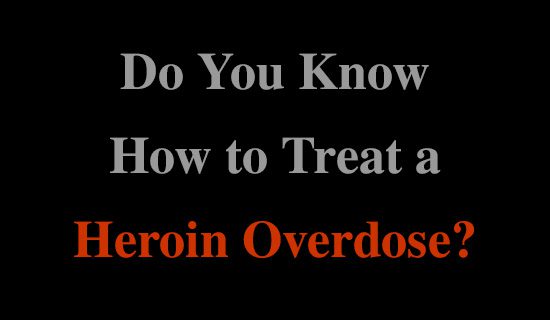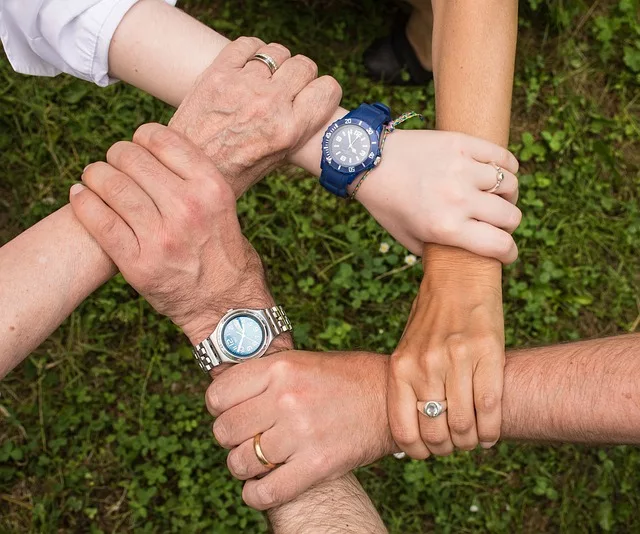Even people with years of recovery still cope with the triggers and cravings brought on by addiction. So it’s not uncommon for those struggling with dependency to relapse after periods of sobriety.
Some addiction experts suggest this is to be expected, but it can be dangerous, if not deadly, where opioid and heroin overdose is concerned.
Heroin overdose rates have been increasing around the country over the past few years, and it’s no longer isolated to back alleys. This is happening even in affluent neighborhoods.
It’s vital not only for first responders but also for family members and friends of those with opiate dependency to know the signs of overdose and the steps to take when faced with this situation.

What are the five steps SAMHSA Recommends for an Opioid or Heroin Overdose?
1. Call 911
In the absence of medical personnel, the first thing to do is call emergency services so medical attention is on its way.
2. Check For Signs of Overdose
Overdose signs can include a limp body, pale face, clammy to the touch, vomiting or gurgling noises, being unable to awake, and slow or no breathing.
A person overmedicated on heroin or opioid painkillers might appear drowsy, confused, have pinpoint pupils, difficulty waking up, slurred speech, or shallow breathing.
3. Support Breathing If Necessary
Before EMS arrives and 100 percent oxygen is available, an overdose victim may need help breathing.
- Ensure the airway is clear, place one hand on the chin, tilt the head back and pinch the nose
- Then place your mouth over the victim’s, creating a seal, and give 2 slow breaths
- The patient’s chest should rise, not their stomach
- Follow up with one breath every 5 seconds until EMS has arrived
4. Administer Naloxone (Narcan)
EMS should give the overdose victim either an intravenous or intramuscular naloxone injection to restore spontaneous respiratory functions.
Narcan is now carried by most emergency personnel and can also be purchased by parents, friends, and those who are regularly using heroin.
5. Monitor the patient’s response
After naloxone has restored normal breathing, patients, especially those who ingested long-acting opioids, must be monitored to ensure that overdose symptoms don’t recur once the naloxone has worn off.
Taking steps to prevent heroin or opioid overdose is something that users, family members, friends, and communities can do to reduce drug-related fatalities. While these actions can save lives, some societies have a difficult time accepting extreme approaches.
For instance, while illicit drug use of any kind is unsafe, harm reduction programs like monitored injecting rooms have proven to reduce fatalities and the spread of disease. Along with needle exchange programs, some countries even provide heroin users with testing kits so they know the drug’s purity level.
Here are 5 Overdose Prevention Strategies Suggested by SAMHSA:
1. Available Treatment
Ensuring that any substance-dependent individual has access to effective, medically supervised treatment, counseling, and supportive services reduces the likelihood of overdose.
2. Education
Physicians, pharmacists, family members, and those at “high risk” for opioid overdose should be encouraged to stay abreast of practices that prevent overdose. Resources, such as Project Lazarus offer free instruction on prevention techniques.
3. Calling 911
Anyone experiencing an opioid or heroin overdose needs immediate medical attention, and the first step in this process is immediately calling emergency services.
4. First Responder access to Narcan (Naloxone)
Approved by the Food and Drug Administration (FDA), naloxone has been used for 40 years to reverse an opioid overdose and restore respiratory ability in patients.
Local EMS should have training in treating opioid overdose and be allowed to have it in stock at all times.
5. State Drug Monitoring Programs
Drug monitoring programs can reduce opiate overdose from prescription painkillers by lessening addicts “doctor shopping,” the process of using different doctors, unbeknownst to them, to get prescription pain medication.
Preparing and taking steps to prevent opioid overdose can save lives. Though there are stories of addicts who refuse to get clean, even after an overdose, there are also individuals who’ve gone on to live happy, healthy, and sober lives thanks to treatment, counseling, and support from their loved ones. If necessary, use resources, such as The National Treatment Referral Helpline, to find the appropriate treatment and counseling facilities.
Part I of this post discusses the Consequences of an Opioid Overdose, and contains links to external resources along with the most common opioids, who is at risk, and what happens during an overdose.
Related:
Naloxone is Now Legal For Opiate Overdose





